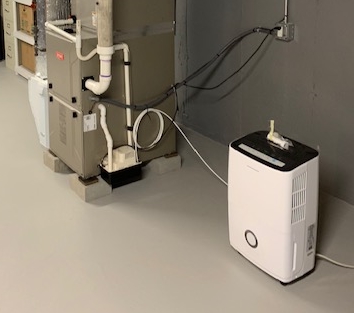From August of 2017 to spring of 2018 we saw more groundwater damage on the Cape than ever before. Most of the homes and businesses were unprepared for the events that happened making property losses devastating to owners. Now that it has happened it is very real to the local owners that even if their basements never flooded before it doesn’t mean they won’t, and severe damage can happen within a matter of minutes. We hope the information below helps more people prepare for that possibility, minimize damage and protect their belongings.
Flood facts to keep in mind:
- Groundwater can cover a variety of actual sources like rain, storm/ocean surge or high water tables.
- Damage caused by groundwater is often not covered by a typical homeowners insurance policy.
- Flood policies often exclude personal items stored in the basement. If you have a flood policy make sure to double check the exclusions and have them clarified by your agent.
- If your basement floods because the water tables are very high you may not be able to do much about the water until the levels have subsided. If you pump the water out into your yard it will probably seep right back in unless the pumping is continuous.
- You do have options! Just because you take on groundwater under severe conditions doesn’t mean you have to sell and move on. You may have to invest in waterproofing solutions but it can be maintained.
Recommendations for properties in flood-prone areas
- Raise basement appliances and contents up off the ground. Put them up on blocks, shelves or pallets. You could even install a false floor over the slab to allow for water to drain below to a sump pump.
- Install a sump pump! Some basements may need more than one. Regardless of how many you install make sure you set up a battery back-up or generator. Last year some owners had pumps but they needed electricity to run and the storms knocked out the power for days so the areas flooded. Odds are that when the flooding is bad so isn’t the weather and power outages will be likely.
- Properly grade your landscaping. You’re bound to see problems if you have a yard that directs water towards your basement. A good rule of thumb is to make sure that the soil around the foundation slopes 4-6 inches for a distance of 3′ from the foundation walls.
- Check your downspouts. Just like with the landscaping you want to make sure your down spouts are directing the water away from the house. Water should be directed at least 3′ from the foundation.
- Install an interior drainage system to give the water a place to go. There are several different kinds to suit different types of foundations.
- Seal your basement walls. This and many of the other options listed here can be taken care of by basement waterproofing professionals. Do your research, read reviews and get quotes from a few places before deciding on the company to help you with your unique waterproofing needs.
- Make sure you dehumidify. This is important whether you sustain flooding or not, but certainly a necessity if you do. Anything that gets wet needs to be properly dried to avoid mold growth.
- For more severe cases like properties that take on storm surges that cause feet of water to quickly collect you may want to look into more drastic measures such as raising the entire house.

